Eight-passenger Princess offers a luxurious and slow-paced way to experience provincial France
The Arizona Republic — September 16, 2012
LOIRE VALLEY, France — Never before has traveling so slowly brought such a huge rush.
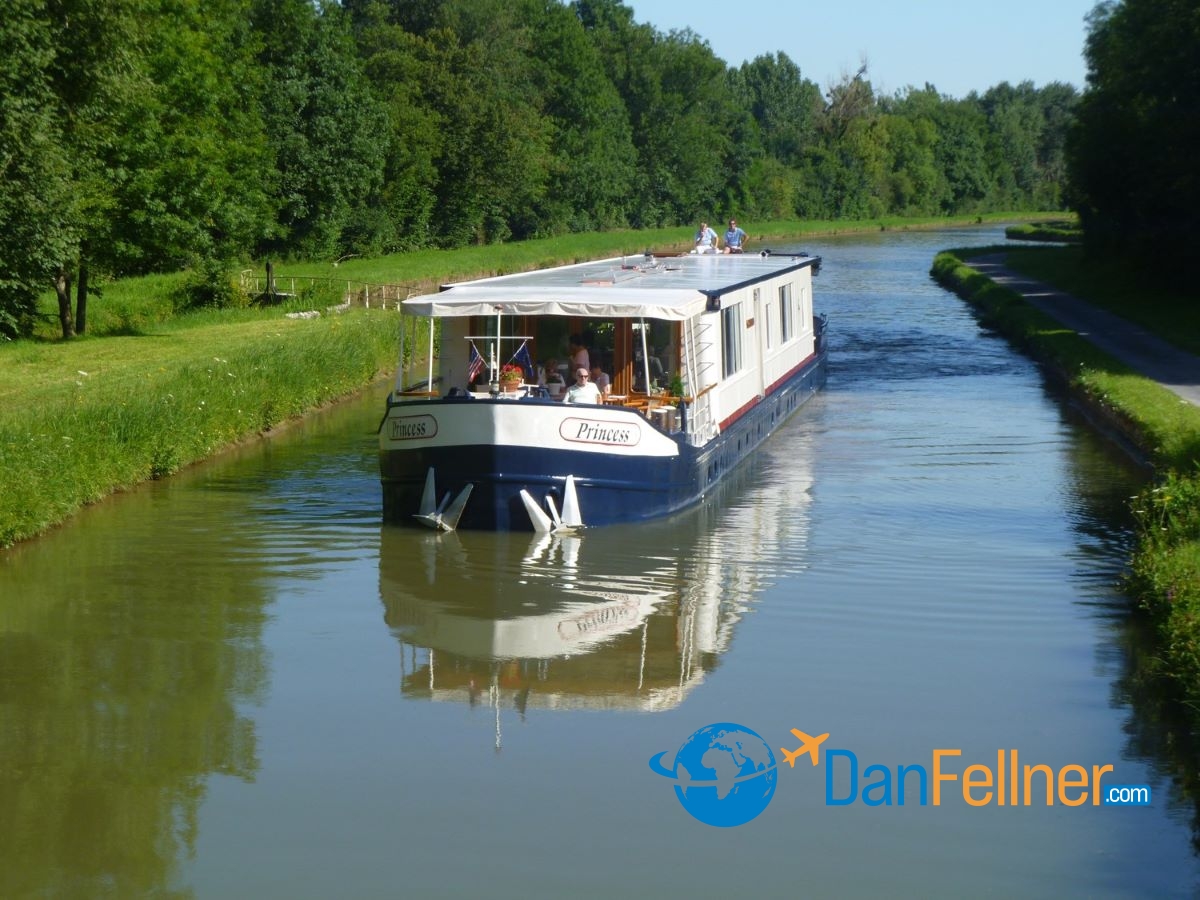
The Princess slowly traverses the Briare Canal in France.
We’re cruising the Briare Canal in the Loire Valley south of Paris on a small barge and are being passed by pedestrians taking a leisurely stroll on a gravel path next to the canal. Our top-speed on this six-day cruise never exceeds 3 mph, and during the entire trip we traverse a grand total of 30 miles.
Our dawdling pace is fine with us. As the barge drifts by small villages, vineyards and medieval chateaux in the French countryside, a tout de suite mentality seems as out of place here as a sprawling shopping mall.
Barge cruising is a little-known offshoot of the growing European river cruise market. Barges tend to be smaller than their riverboat cousins, carry fewer passengers, and are able to navigate narrow canals that give cruisers a more intimate and rural traveling experience. Some also offer food and wine worthy of Louis XIV.
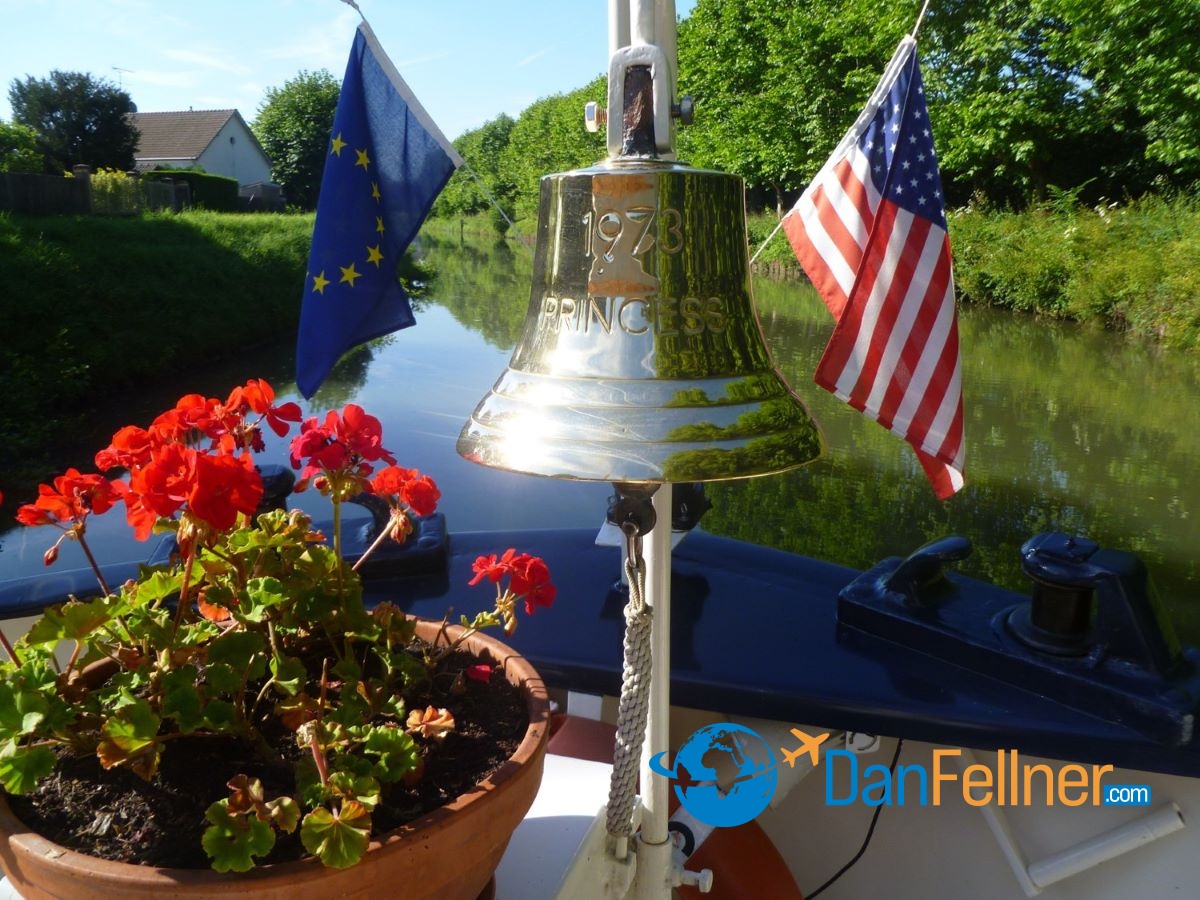
The Princess was built in 1973 for a billionaire shipping magnate.
I was on an elegant barge called the Princess, one of four vessels cruising this year in the fleet of French Country Waterways, the only American-owned barge cruise company operating in France.
In addition to the Loire Valley, FCW barges – none of which carries more than a dozen passengers — cruise through canals in the French regions of Burgundy, Champagne and Alsace-Lorraine.
The Princess, originally built in 1973 as a private barge for billionaire shipping magnate Daniel Ludwig, can hold up to eight passengers and an additional six crew members. It feels less like a cruise ship and more like a floating bed-and-breakfast — with lunch, dinner and top-shelf French wines and cheese thrown in as well.
It’s the only time I’ve been on a cruise in which I memorized everyone else’s name – including the crews’ – by the second day. Half of the six crew members were from England; the rest were French, but everyone spoke English.
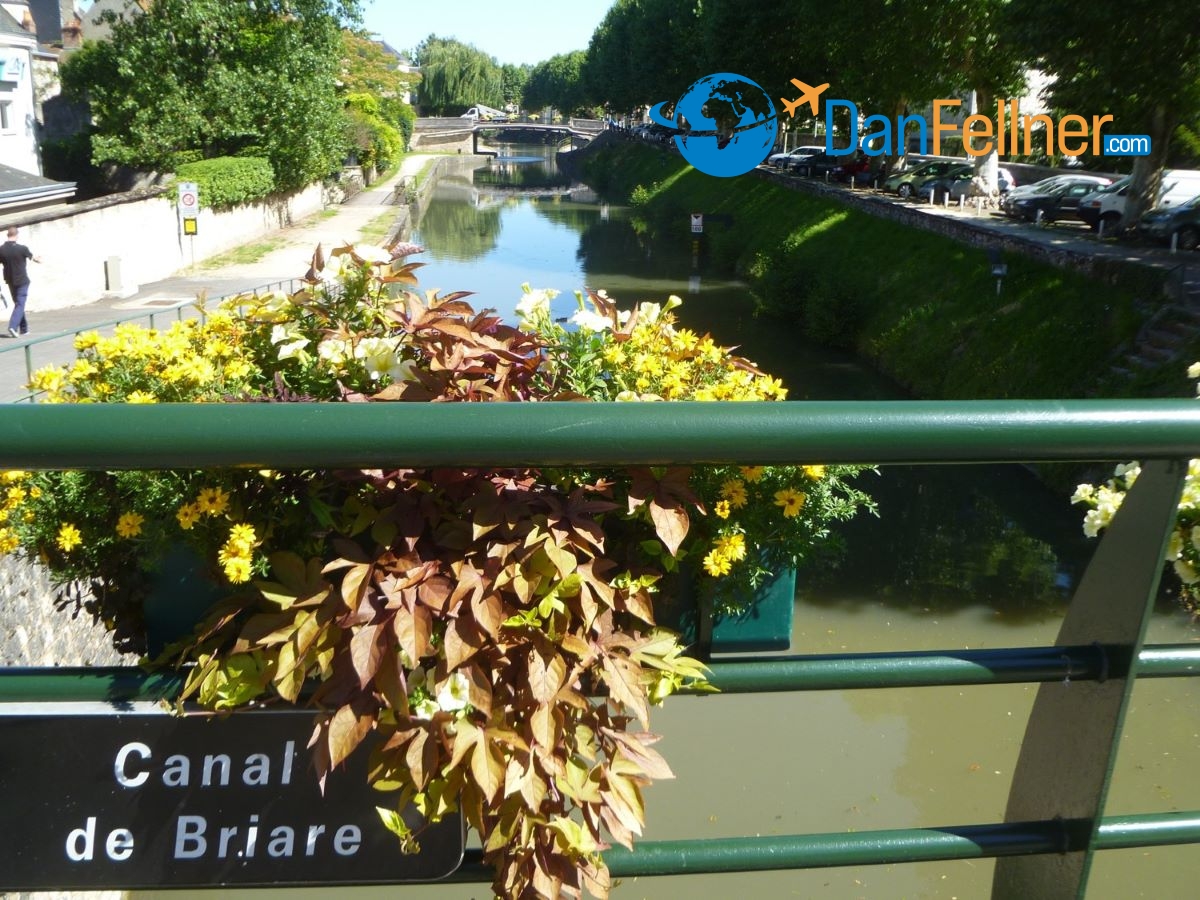
The Briare Canal in Montargis, France.
At the beginning of the week, our captain and tour guide, Joanne Padbury, picked up our group of four couples at a Paris hotel and drove us in a van about 60 miles south to the ancient walled-town of Montargis. There, the Princess was waiting for us moored in the Briare Canal.
One of the oldest canals in France, the Briare opened for traffic in 1642. In those days, barges were pulled by horses on towpaths. Before trains came along, river and canal barges were one of the safest and most efficient ways to transport both people and goods in Europe.
But their importance waned over the centuries, and now French barges are used primarily by vacationers and the canals maintained by the government for their historic importance and scenic beauty.

Wildflowers in the Loire Valley.
The towpaths still remain and we used them to take walks and ride bicycles stored on the back deck of the Princess. While we were cruising, Padbury would drive the van each day through the nearby villages to pick up fresh croissants at boulangeries for breakfast and ingredients at other shops that our French chef, Jean-Yann Attica, would whip into wonderful meals. Padbury would also use the van to take our small group on sightseeing excursions.
Montargis, with a population of about 60,000 including its suburbs, was easily the largest town on our itinerary. We took a walking tour through its historic downtown and saw how the “Venice of Gatinais” earned its nickname.
Like Venice, Montargis has a large network of waterways cutting through the heart of town and there are 131 bridges — many adorned with beautiful flowers – that cross them. At the end of the tour we were treated to a praline-tasting at a candy store, at which Padbury bought our supply of chocolate goodies for the week.
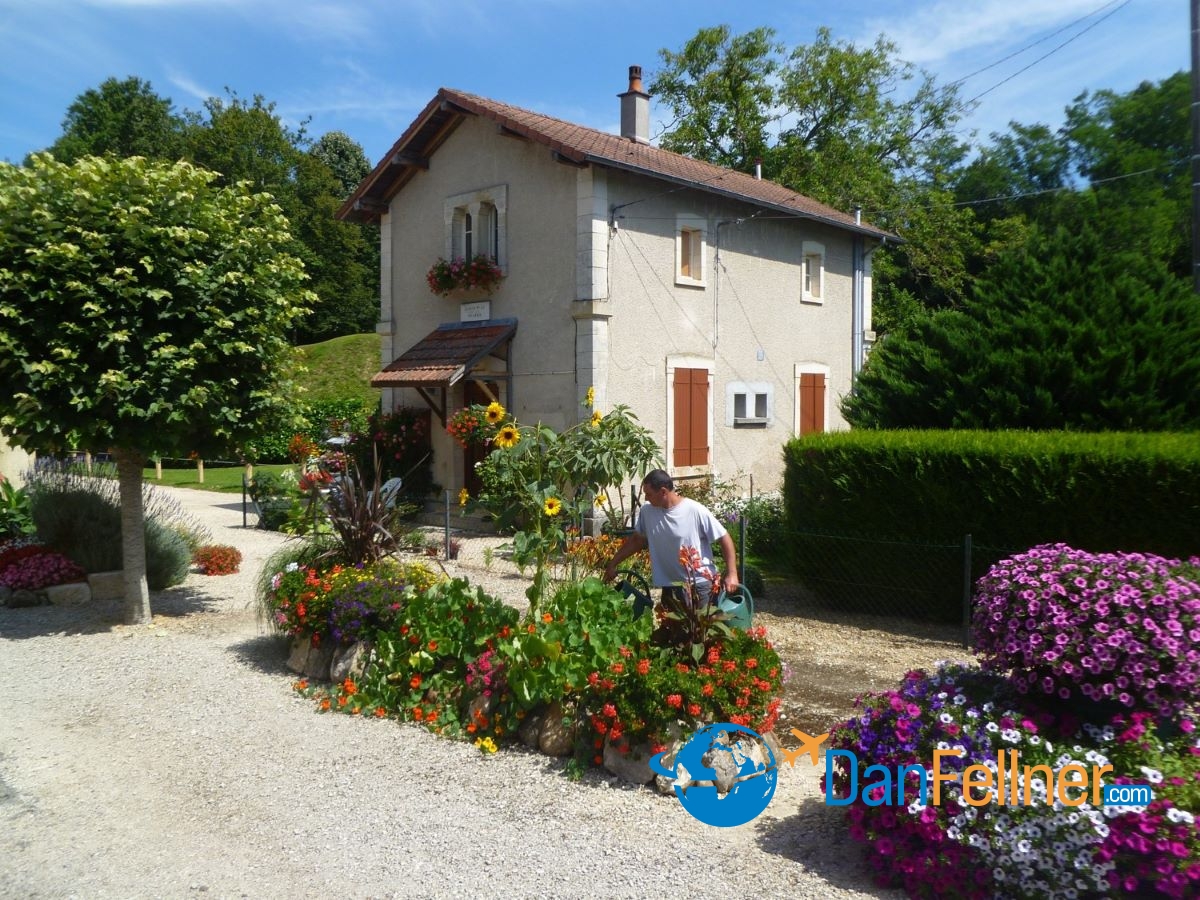
A lockmaster tends to his flowers at his home next to the Briare Canal.
The next two days the Princess was moored in the village of Rogny-les-Sept-Ecluses, named for its seven locks that were built in the 17th century. These locks, which resemble a large staircase, are no longer in use but remain an intriguing site for visitors.
Numerous other lock stations in the canal – every few hundred yards or so — still function. The aquatic elevators are needed to compensate for changes in elevation in the Loire Valley.
Loic, our pilot, would steer the Princess into a lock station with the precision of a surgeon, as there were just a few inches to spare on both sides of the barge. A lock keeper, who typically lives in a home adjacent to the station, would then close a large door behind the vessel. If we were going up, water would pour into the lock, enabling the Princess to rise several feet, just as a rubber duck rises when a bathtub is filled.
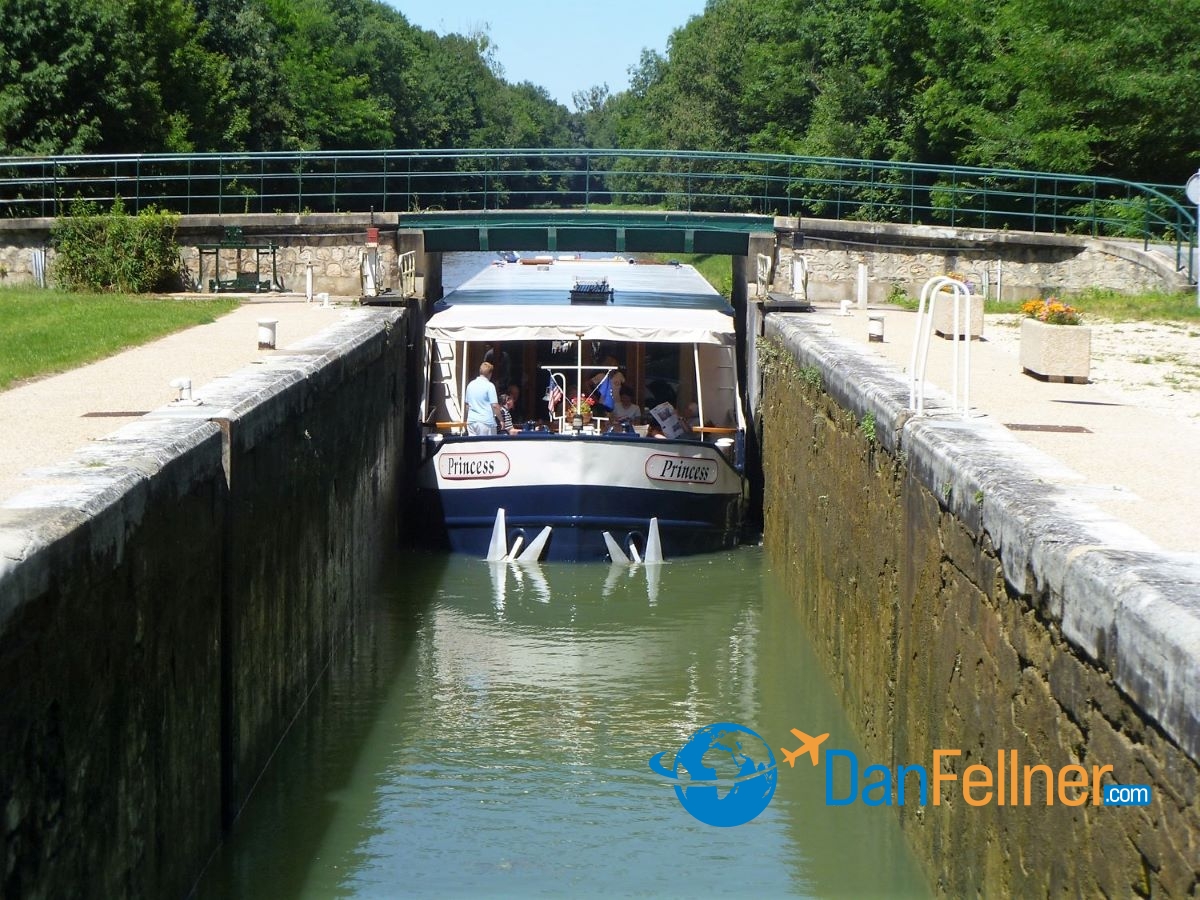
The Princess barge squeezes into one of numerous locks on the Briare Canal in France.
Watching the process unfold over and over again never got boring. The lock stations also were a convenient place for us to get off the barge for walks and bike rides.
While moored in Rogny, our crew taught us to play the popular French game of petanque (pronounced pay-tonk). Contested on a gravel field with hollow steel balls, petanque is somewhat similar to the Italian game of bocce. The slow-paced and cerebral game seemed a perfect fit with the laidback tone of the cruise.

The Chateau de Chambord, a UNESCO World Heritage Site.
In terms of sightseeing, the highlight of the week was a trip to the largest and most famous chateau in the Loire Valley, the Chateau de Chambord. A UNESCO World Heritage Site, Chambord was built in the early 1500s as a hunting lodge for King François I.
It has 426 rooms, 282 fireplaces and 77 staircases, including a unique double-spiral staircase that links the chateau’s three floors. Some historians believe Chambord was designed by Leonardo da Vinci.
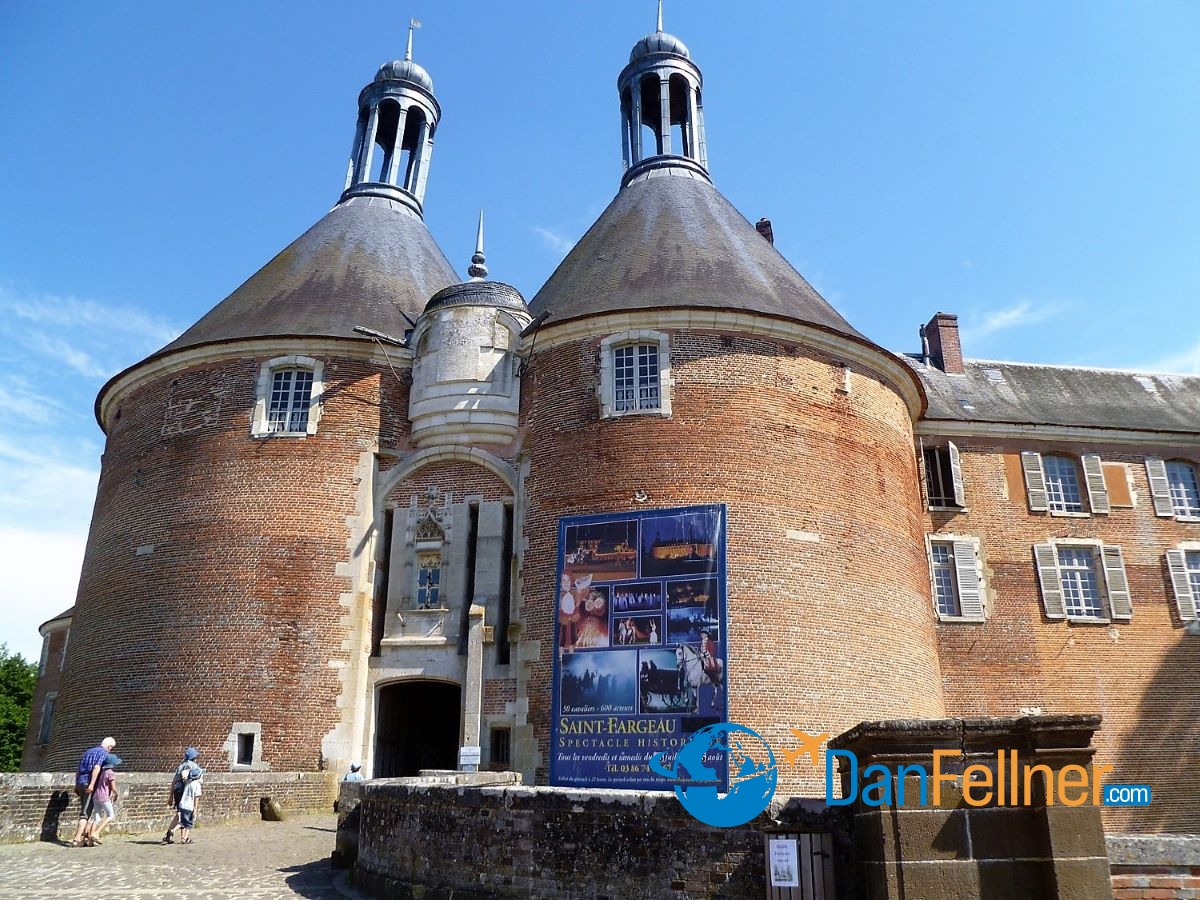
The chateau in St. Fargeau dates back to the 15th century.
We also visited an even older chateau in St. Fargeau, which dates back to the 15th century. And there were excursions to a winery in Chavignol, a pottery factory in Gien, and a cruise through an engineering marvel called the Pont de Canal.
This watery bridge takes the Briare Canal high across the Loire River. Designed by Gustave Eiffel – yes, the same Eiffel best known for the Paris tower – the Pont de Canal was the longest navigable aqueduct in the world from 1896 until the Magdeburg Water Bridge opened in Germany in 2003.
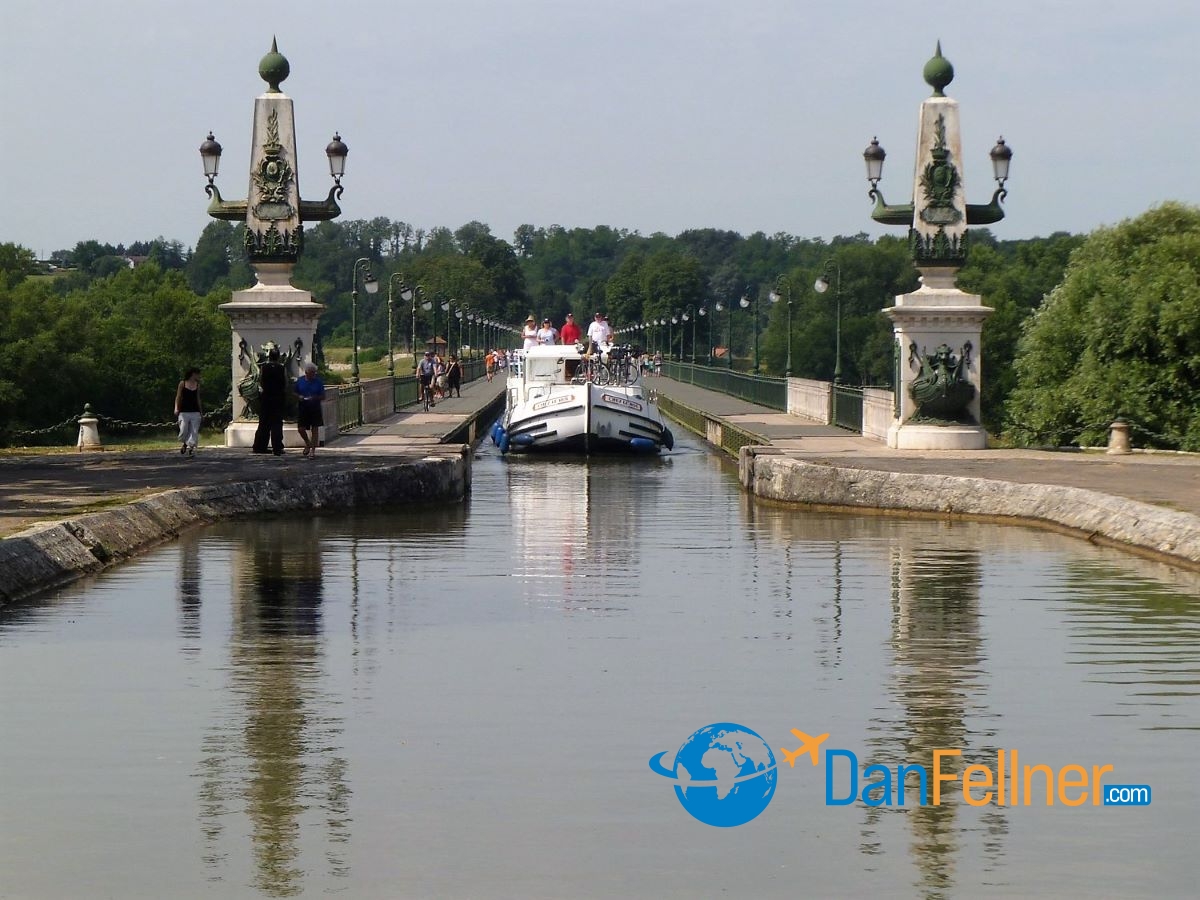
Entrance to the Pont de Canal, designed by Gustave Eiffel in 1896.
Our forays into French life were punctuated each evening with delightful four-course, three-hour dinners, which included presentations from the crew about the French cheeses and wines we were served – many of which had attained prestigious Grand Cru or Premier Cru status. At the captain’s dinner our final night aboard the Princess, we were presented with copies of the menus, wine labels, and a cheese list for the connoisseurs among us who wanted to enjoy the same wines and cheeses back home.
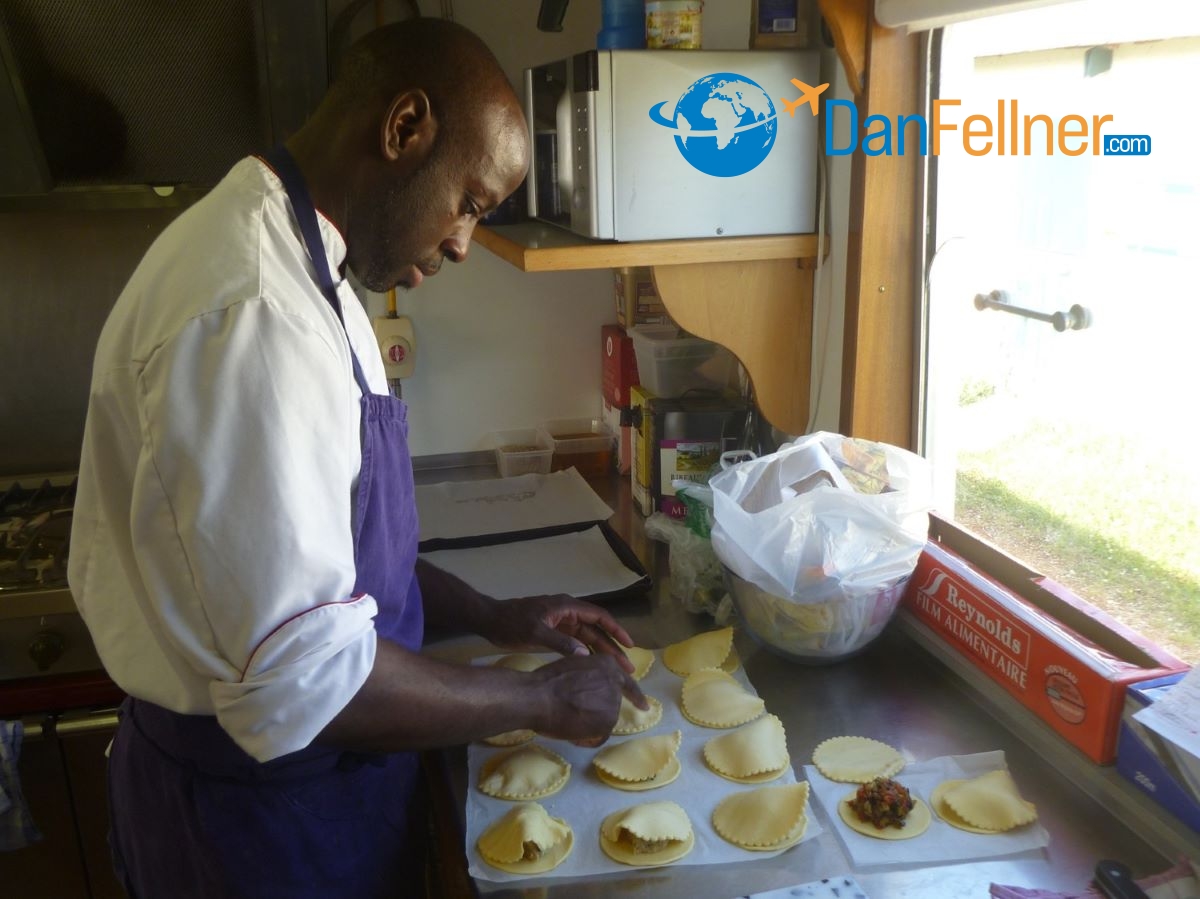
Chef Jean-Yann Attica prepares a meal in the Princess’ small kitchen.
We had been concerned about cruising with such a small group of people. What if we weren’t compatible? With only eight passengers aboard, lunches and dinners are eaten together at one table. There’s no place to hide.
But our fears proved to be unfounded. The three other couples – two of whom were American, the other Australian – were delightful travel companions and our mealtime conversations were as interesting and enjoyable as the passing scenery.
“Some people come onboard with a bit of trepidation, realizing that you’re only going to meet three other couples,” said Padbury, who has worked for French Country Waterways for 10 years, the past four as a captain and guide.

Dessert served onboard the Princess.
“But I personally like the intimacy. I like the fact that I get to know my clients by the end of the week, about their families, their jobs, even how they take their coffee. There’s a connection.”
At the end of the cruise, we climbed into the van once more and Padbury drove us north back to Paris via a four-lane highway. It took us less than a half-hour to reach Montargis, where the Princess had started its journey on the canal six days earlier.
The trip going south on the barge had been much slower, but a lot more enriching. We had taken the same mode of transportation along the same route the locals had used nearly 400 years ago – and gotten a wonderful taste of French culture in the process.
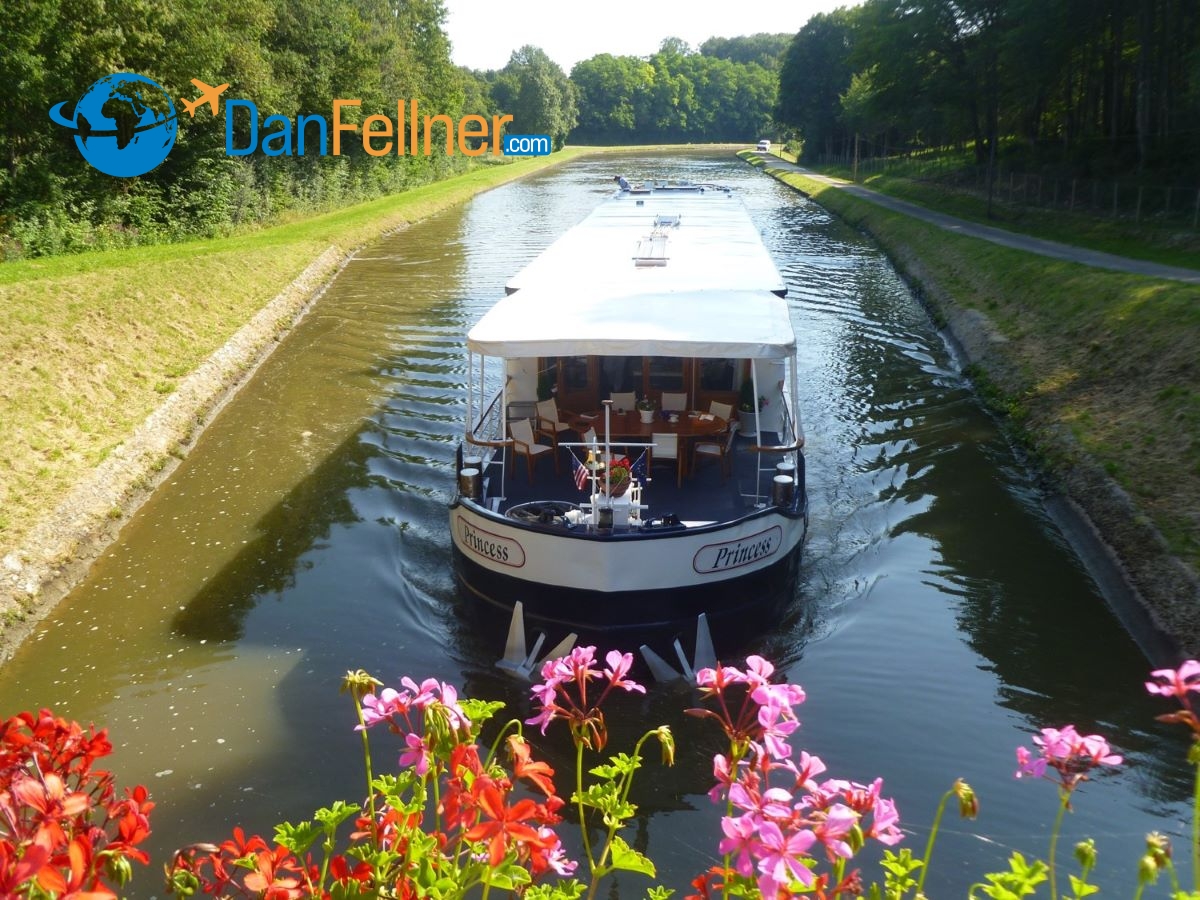
© 2012 Dan Fellner



